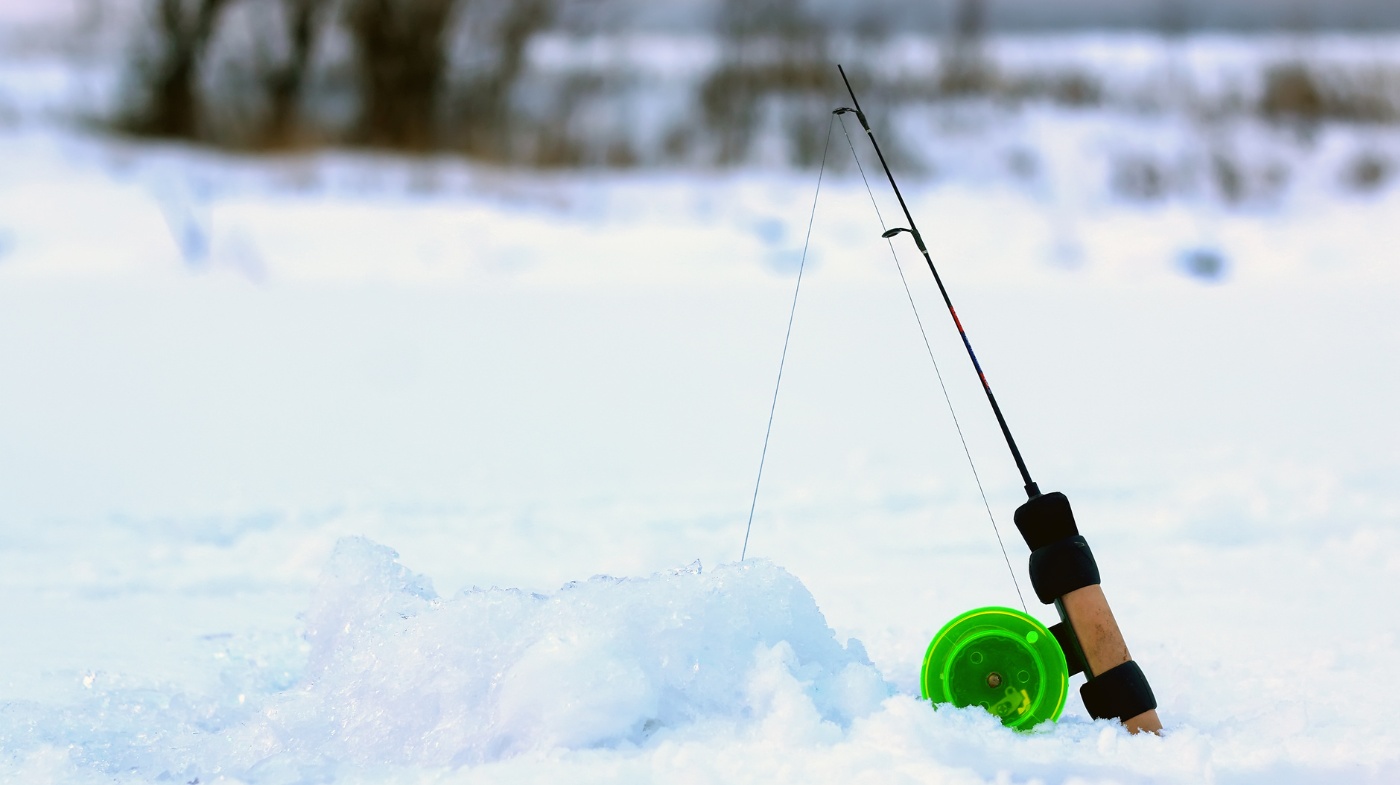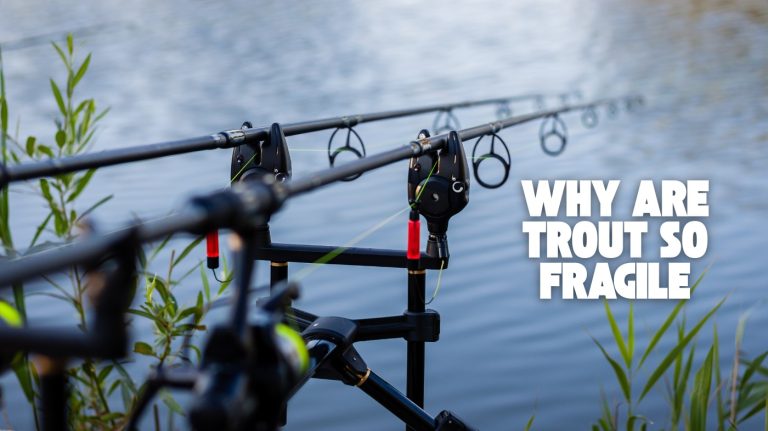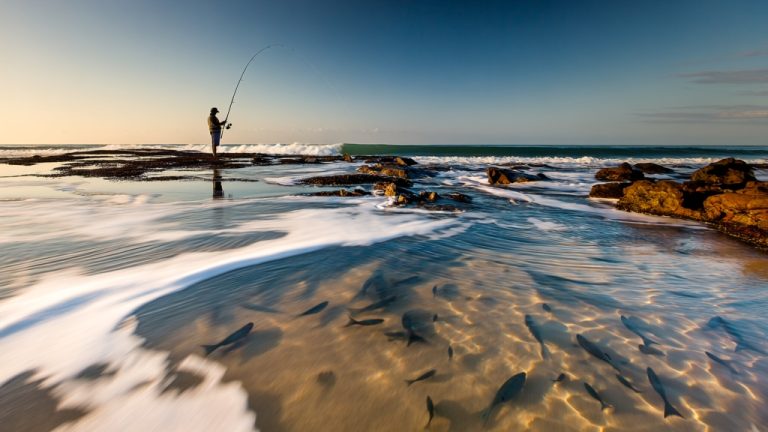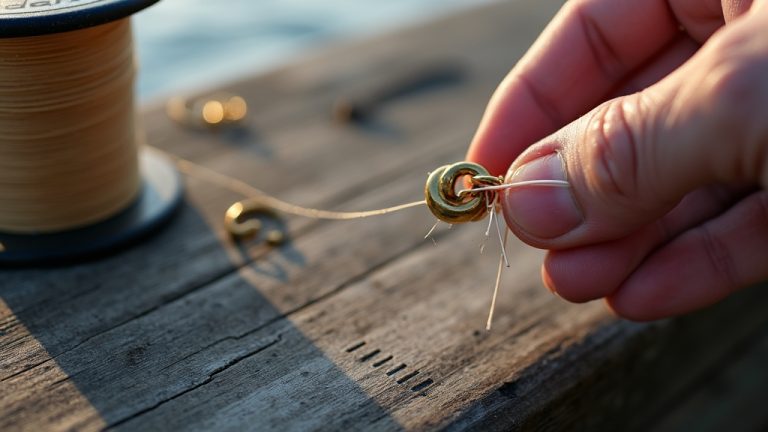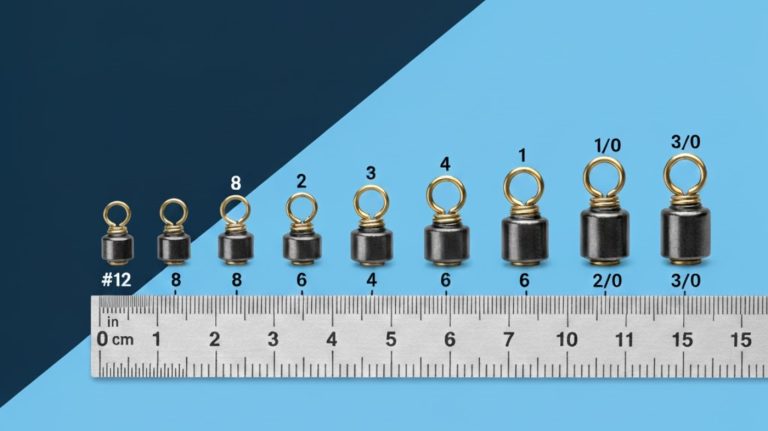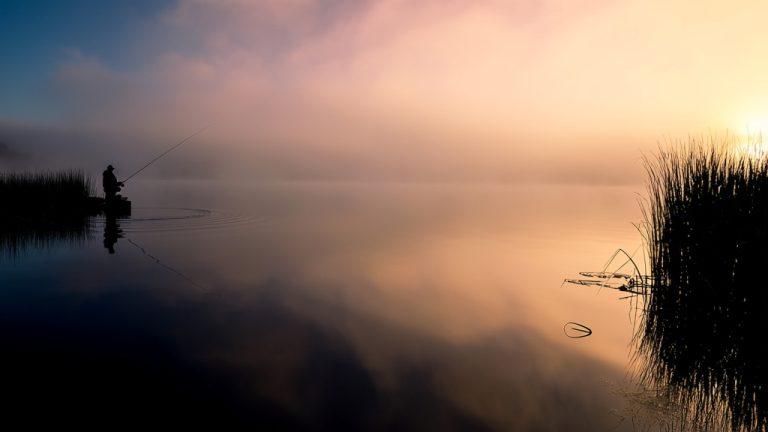Crappie Fishing in the Winter Time: Slow and Steady Wins
For winter crappie fishing, focus on deep, structured spots like brush piles, ledges, and channels between 15 and 40 feet deep where crappie suspend near baitfish.
Use slow, finesse presentations like 1/16 oz jigs tipped with minnows or soft plastics, especially during low-light hours. Target oxygen-rich, still waters with minimal current and cover. Watch for crappie moving shallower on warm days near vegetation.
Mastering these strategies sets you up to catch more fish as conditions demand.
Key Takeaways
- Target deep, oxygen-rich structures like brush piles, rock piles, and channels at 15–40 feet during mid to late winter.
- Use slow, vertical jigging with small jigs tipped with minnows or soft plastics near bottom or suspended crappie.
- Focus on low-current, cover-rich areas such as submerged timber, docks, and steep bank slopes where crappie school tightly.
- Fish primarily during early morning and late afternoon when crappie feed sluggishly but actively in colder water.
- Utilize sonar and polarized sunglasses to locate suspended schools and improve bait presentation in low visibility conditions.
Winter Habitat and Depth Preferences of Crappies
When winter chills the water, crappie shift their habits by seeking deeper, structured areas like rock piles, submerged timber, and river channels where they find both shelter and food.
You’ll want to target basins, underwater ledges, and deep holes ranging from 15 to 25 feet, as crappie commonly suspend just below baitfish schools there. Using oxygen-rich water in live bait containers helps keep bait lively for winter fishing.
Remember, depth varies with water temperature and forage location. On warming days, fish may move shallower to 2–6 feet. Black crappie typically begin spawning when water temperatures reach 56°F, indicating a preference for this temperature range in seasonal behavior.
Prioritize slow-moving or still water with minimal current, focusing on spots rich in shad or other prey. If baitfish are abundant, crappie sometimes suspend over open flats, but generally, they prefer cover to avoid predators.
Seasonal Movement Patterns During Cold Months
As water temperatures drop, crappies adjust their locations to balance oxygen needs, cover, and food availability throughout the colder months.
Early winter finds them near dense vegetation in shallows, but as ice thickens and oxygen drops, they migrate to deeper basins, following zooplankton and shad schools. This movement is largely driven by the decreasing oxygen levels in shallow waters caused by ice cover and plant decomposition.
Handle any felt shoes used during fishing with care, using gentle cleaning methods to preserve their condition after winter outings. You’ll find them schooling tightly around vertical structures like brush piles and channel drop-offs, especially at 25-40 feet depth.
| Season Phase | Typical Location | Key Behavior |
|---|---|---|
| Early Winter | Shallow vegetation (2-10 ft) | Active feeding near cover |
| Mid to Late Winter | Deep channels & humps (25-40 ft) | Tight schooling, slow feeding |
| Late Winter | Oxygen-rich transition zones | Stable holding, low activity |
Target these zones with finesse gear and subtle presentations to match winter crappies’ cautious strikes.
Key Physical and Chemical Factors Affecting Winter Crappie Locations
Although winter conditions seem harsh, understanding the key physical and chemical factors affecting crappie locations can sharpen your fishing strategy.
Crappies seek stable, slightly warmer waters near lake bottoms with soft mud or silt, where temperature fluctuations are minimal. Choosing the right sunglasses with lens technology can improve your visibility in such low-light underwater environments.
Crappies prefer stable, warmer waters near lake bottoms with soft mud, minimizing temperature changes.
You’ll find them suspended mid-depth between colder deep layers and warmer surfaces, balancing their oxygen needs in areas with sufficient dissolved oxygen, often near structures that reduce current.
Keep in mind, ice cover lowers oxygen, making deeper basins with better aeration prime spots.
Zooplankton availability also guides crappie positioning; they prefer zones where this food source concentrates, like slow-flowing backwaters or vegetation edges.
After fall turnover, crappies gain access to the entire lake basin, but the thermocline barrier limits their movement into lower oxygen zones.
Effective Winter Fishing Locations and Techniques
Since winter crappie seek shelter and stable conditions, focusing your efforts near brush piles, submerged trees, docks, and bridge pilings will increase your chances of success. Using sunglasses with glare reduction can help you spot crappie more easily in these bright winter conditions.
Target steep bank slopes with rocky crossings and main river channels where crappie stack along ledges. Use vertical jigging with 1/16 oz jigs tipped with minnows or slow plastic tails to mimic sluggish baitfish. Hair jigs excel during winter due to their natural, breathing action that entices lethargic crappie.
Spider rigging multiple rods around cover lets you cover more water and detect subtle bites.
| Location Type | Recommended Technique |
|---|---|
| Brush piles & docks | Vertical jigging with minnows |
| Steep rocky slopes | Slow jigging with hair jigs |
| Deep humps & channel swings | Spider rigging on multiple rods |
Precise sonar use and depth control with slip bobbers help pinpoint suspending crappie near thermoclines and oxygenated zones. Wearing polarized sunglasses enhances visibility by cutting surface glare, making it easier to interpret sonar readings and detect fish movement.
Feeding Behavior and Timing for Successful Winter Crappie Angling
When you target crappie in winter, understanding their sluggish feeding habits and preferred timing is essential for success.
Crappie feed less aggressively, favoring slow, finesse bait presentations near the bottom or suspended in deep water, typically 18 to 50 feet, where temperatures stay stable. Choosing gear with a smooth drag system can help manage the delicate bites common in this season.
Focus on early morning and late afternoon, the prime feeding windows when crappie briefly increase activity. Use small jigs or soft plastics mimicking slow minnows or zooplankton.
Pitch or jig your bait slowly near underwater break lines, channel edges, or brush piles, key winter hotspots. Avoid fast retrieves that spook lethargic fish.
Employ sonar to locate suspended schools and adjust your timing to match their short feeding bursts. Forward-facing sonar can greatly enhance your ability to pinpoint these fish in clear water.
Frequently Asked Questions
What Is the Best Type of Bait to Use for Winter Crappie Fishing?
You’ll want to use live minnows lip-hooked under a bobber for winter crappie. They’re prime bait when fish stay inactive.
Pair them with small hair jigs to mimic natural movement, especially maribou or feather combos. Adjust your bait depth slowly near bottoms or suspended layers.
Use light tackle with 6-12 lb test line for better hooksets. Soft plastics with slender, moving tails on 1/16 oz jigheads also work great around structure in cold water.
How Does Ice Thickness Affect Safe Crappie Fishing Practices?
Ice thickness directly affects your safety and gear choices when fishing for crappie.
You’ll need at least 4 inches of clear, solid ice to walk safely and set up. Thicker ice, 8 to 12 inches, lets you bring heavier equipment or portable shelters.
Always check thickness at multiple spots since it varies, especially near currents. Avoid snow-covered or slushy ice as they weaken stability. Prioritize safety by testing ice regularly with a spud or auger before drilling your holes.
Can Crappies Be Caught Through the Ice or Only in Open Water?
You can definitely catch crappies through the ice, not just in open water.
When ice fishing, focus on deep basins with soft, mucky bottoms. Crappies suspend there during winter. Use sonar to locate them and tip your jigs with minnows for better strikes.
Remember, crappies feed more actively after dark, so be patient and adjust your bait during feeding lulls. Proper hole placement and safety gear are essential for success.
What Gear Adjustments Are Recommended for Cold Weather Crappie Fishing?
Think of your gear as a delicate dance partner. You need ultralight spinning rods around 16 feet with sensitive tips to feel those subtle winter bites. Use small spinning reels paired with 2-4 lb fluorocarbon line for stealth.
Opt for tiny 1/16-ounce jigs tipped with natural bait, and employ slip bobbers to suspend your lure precisely. Keep jig movement slow and natural.
Consider spider rigging with light weights like a 3/4-ounce egg sinker to maintain control in windy conditions.
Are There Specific Safety Tips for Winter Crappie Anglers on Frozen Lakes?
Yes, you should always check ice thickness—never less than 4 inches for walking—and avoid spots near currents or inflows where ice thins. Regularly test ice every 8-10 feet as you move.
Wear layered, waterproof clothes, insulated boots with ice cleats, and carry emergency ice picks. Use a flotation device and inform someone of your plans. Finally, watch for cracks, slush, or discolored ice, and always have proper shelter and lighting for safety.
Find the Hot Spots: Best Fish Finders and Lures for Cold-Weather Crappies
When winter settles in, crappies tuck into deeper waters where temperature and oxygen levels suit them best. To catch these fish, you’ll want to focus on those key spots, like submerged brush piles or creek channels, and use slow, deliberate techniques.
Timing your trips around their limited feeding windows can make all the difference. Remember, patience is your best friend here; with the right approach, you’ll turn the cold months into a gold mine for crappie fishing.

